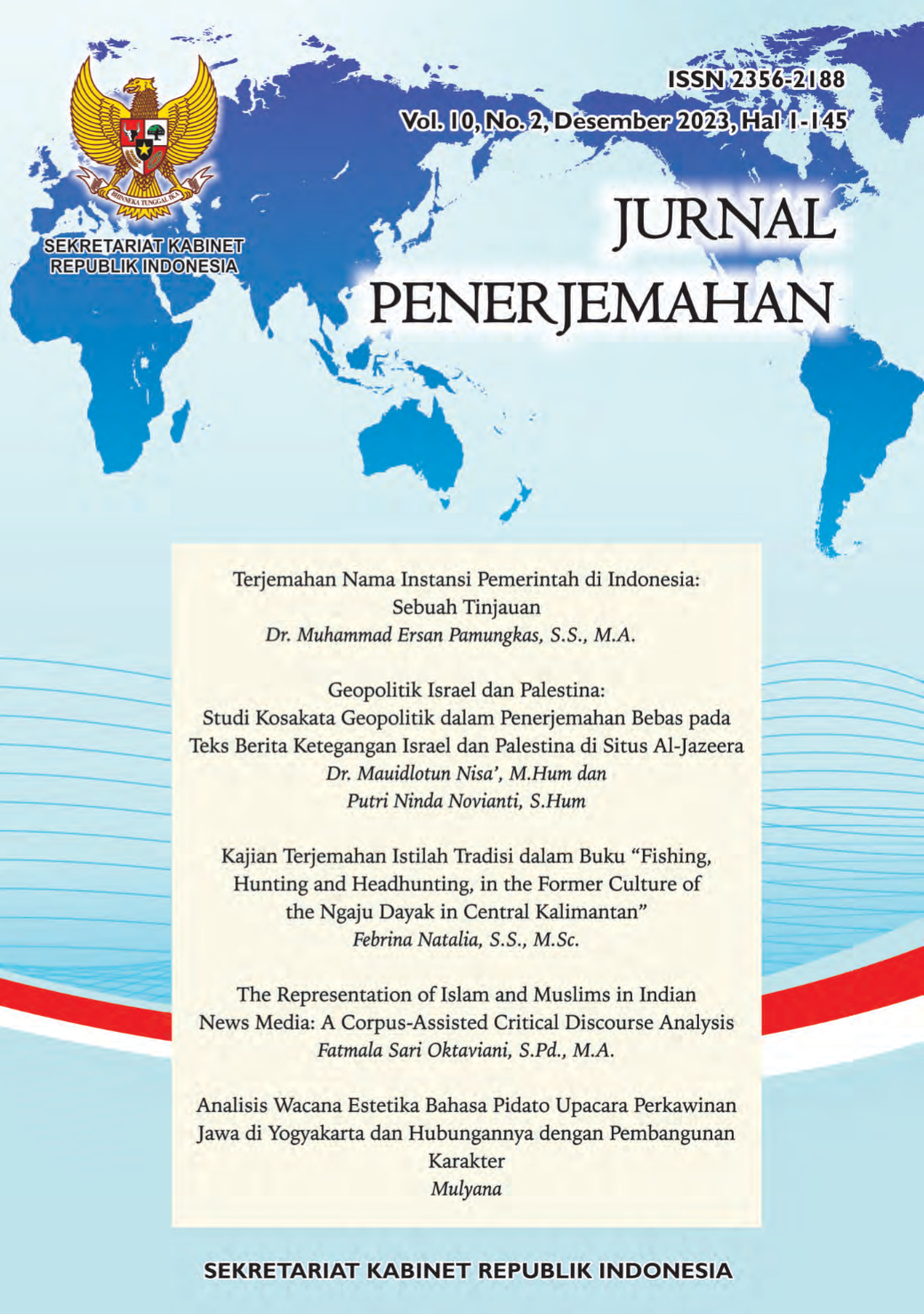A Study of Traditional Term Translation in the Book Fishing, Hunting and Headhunting in the Former Culture of the Ngaju Dayak in Central Kalimantan
Abstract
The book entitled “Fishing, Hunting, and Headhunting in the Former Culture of the Ngaju Dayak in Central Kalimantan” is a book translation that is replete with traditional terms and cultural values. The study of this book is carried out based on three underlying issues, namely: (1) the forms of tradition used in the book, (2) the techniques used to translate the terms of tradition, and (3) the factors that influence the translation. This study uses a descriptive qualitative method with a designed case study. Data sources are selected from 100 Source Texts based on certain criteria (purposive sampling technique). The results of the discussion show that: (1) 50 terms of tradition are categorized into artifacts, 31 terms of tradition are categorized into activities, and 19 terms of tradition are categorized into ideas; (2) the techniques used to translate the terms of tradition are description (33), borrowing (32), amplification (14), generalization (12), adaptation (4), reduction (2), particularization (1), literal translation (1), and established equivalence (1); and (3) the factors which influence the translation of the terms are: linguistics, viewpoints and cultural differences, limited literature, and limited local people as sources.
Keywords: forms of tradition, translation techniques, terms of tradition, Dayak Ngaju

